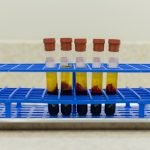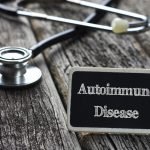Allergies: A Route to Resolution
Vis Medicatrix Naturae
Todd A. Born, ND
Allergens appear in many forms: food, environment, pets, chemicals, lotions, potions, medications, even “natural substances.” You may have noticed that you suddenly have allergies that you never had before. The all-too-classic scenario presents to your office: “Doc, I don’t know what it is, but I seem to be becoming more and more allergic! I can’t eat certain foods any longer, and certain smells give me a headache and brain fog. What is going on?” Or, another classic patient presentation: I have had countless patients say to me, “Doc, my seasonal allergies seem to get worse every year, and they’re active longer. Why is this?”
Usually there’s a very simple explanation. As I tell my patients, this is how I think of it… Imagine a cup that is half-full of water. The cup is your immune system and the water is everything you’re exposed to. Then add dust mites, cat and dog dander, pollen, ragweed, mold, chemicals in our environment, medications, poor food choices,1 etc, and now that cup is overflowing. Essentially, the immune system can no longer keep in check what it had kept in check for so long.
The Asthma and Allergy Foundation of America defines “allergy” as an overreaction of the immune system to substances that usually cause no reaction in most individuals.1 Essentially, what is normally a benign and inert substance, the body sees as a foreign invader. Through a complex series of chemical messages and reactions, matters get out of control. And allergies are certainly on the rise, affecting approximately 30% of adults and 40% of children in the United States.1
For allergy sufferers, symptoms can include sneezing; sinus congestion, sinusitis, rhinitis, itching or discharge; itching anywhere else; rashes or urticaria; burning/itchy, watery eyes; difficulty thinking and/or concentrating; fatigue; headaches (usually from the nasal congestion) and swelling; the list can go on.2 These symptoms can be mild to extreme. Mild is more of a nuisance for most, while extreme can be life-threatening (eg, anaphylaxis).2
Causes of Allergy
Food
Let’s address 2 of the main causes of allergies. First, food. Before jumping into a discussion of allergies, it’s helpful to distinguish between a food intolerance, sensitivity, and allergy, since this is a common area of confusion. WebMD puts it succinctly: “Food intolerance is a digestive system response rather than an immune system response. It occurs when something in a food irritates a person’s digestive system or when a person is unable to properly digest – or break down – the food. Intolerance to lactose, which is found in milk and other dairy products, is the most common food intolerance.”3 Essentially, food intolerance is a local gastrointestinal (GI) response, which is non-immune-mediated and generally produces few systemic issues. Intolerances can also occur when certain products are added to foods; monosodium glutamate and sulfites are 2 examples.4
Food sensitivities are a bit more convoluted in that they may or may not be mediated by the immune system via immunoglobulin E (IgE), and are composed of individualized adverse reactions to the offending foods.5 This, in part, may help to explain both local GI and systemic symptoms that occur when these offending foodstuffs are ingested, and they aren’t necessarily mutually exclusive.
Food allergies, on the other hand, are definitively immune-mediated, induce many more systemic symptoms, even leading to anaphylaxis in susceptible individuals. Food allergies may be immediate (and are IgE-mediated), or delayed-onset (usually T-cell-mediated and occurring 4-24 hours after exposure). Food intolerances are much more common than food allergies, which affect only about 2.5% of the general population.6
Environment
The second cause of reactions – and a very contentious and contemporary allergy issue – is the environment. There are more than 83 000 chemicals registered with the US Environmental Protection Agency (EPA).7 Most of these have not been thoroughly tested for their effects on human health (let alone our beloved animal friends). In 2009, the EPA established a “Chemicals of Concern List.”8 The Centers for Disease Control and Prevention (CDC)’s 2011 National Report on Human Exposure to Environmental Chemicals (NHANES), Fourth Report, presented data on 212 chemicals, including 75 measured for the first time in the US population.8
Key findings from the report include widespread exposure to some commonly used industrial chemicals, first available exposure data on mercury in the US population, and first-time assessment of acrylamide exposure in the US population, just to name a few.9 The research literature clearly points to many of these chemicals acting as neuroendocrine disruptors that get stored in adipose, organs, and the fatty sheaths surrounding nerves, wreaking havoc on many of our systems.10-12 Two of these systems are our immune13 and detoxification14 systems. As the body is overburdened by attempting to detoxify the toxicants, the immune system may become “preoccupied” and over-reactive. What was normally an inert, benign substance (such as your beloved cat and dog, for examples), now causes symptoms.
Conventional Approaches to Allergy
How can we best help our patients? Conventional medicine’s answer, which can be very helpful, is not without its drawbacks. Allopathic medicine’s approach is usually to treat the symptoms and calm down the immune system with the use of anti-histamines (of which there are different classes),15 leukotriene inhibitors (mostly used with asthma),16 mast cell stabilizers,17 decongestants, and corticosteroids.18 Another method that many practitioners are familiar with is subcutaneous immunotherapy, or allergy shots, where very small amounts, in gradually increasing doses, of the offending substance(s) are injected into the subcutaneous tissues to promote desensitization.19
These medications are not without their side effects. The most common with anti-histamines (particularly first-generation) include drowsiness, dry mouth, urine retention, difficulty concentrating, constipation, and blurred vision.20 Common side effects of leukotriene inhibitors include headache, earache, sore throat, respiratory infections, nervousness, behavioral issues, nausea, heartburn, fever, stuffy nose, cough, and rash.18 Mast cell stabilizers can cause throat irritation, coughing, or skin rashes. Mast cell-stabilizing eye drops may cause burning, stinging, or blurred vision.18 Decongestants may raise blood pressure, insomnia, irritability, and restrict urinary flow.18 Short-term use of systemic steroids may cause weight gain, fluid retention, and hypertension. Long-term use may suppress growth in children, adolescents, and teens, and in adults may cause hypertension, diabetes, cataracts, depressed immunity, and osteoporosis.18
Allergy shots can be painful and even cause anaphylaxis in some individuals. Although they can help a lot of people, evidence suggests that they are clinically efficacious only in asthma, allergic rhinitis, and insect venom reactions.21,22
By definition, an allergen is an IgE-mediated (Th2-cell) immune response that stimulates histamine release. Physical disruption of tissue and various substances can also trigger histamine release directly, independent of IgE.23 Mast cells are widely distributed, but are most concentrated in skin, lungs, and GI mucosa. Histamine facilitates inflammation and is the primary mediator of clinical hypersensitivity.24
Naturopathic Approaches to Allergy
My personal approach to treating allergy, like most naturopathic physicians, is to treat well beyond palliation, and cure individuals of their affliction:
- Reduce allergen burden as much as possible (I give my patients my “How to Allergy Proof Your Life” handout)
- Establish a more appropriate balance in the Th1/Th2 immune response. This will help to calm an over-reactive immune system, thereby mitigating allergy symptoms.
- Heal the GI tract25-27
Fortunately, there are many natural substances that can restore Th1/Th2 balance. Also available are “natural” anti-histamines, mast cell stabilizers, leukotriene inhibitors, and medicines that have corticosteroid-like effects. Examples of Th1/Th2 balancers are: zinc,28,29 Astragalus membranaceus (also known as Huang qi),30 medicinal mushrooms (eg, Agaricus blazei,31 Ganoderma lucidum32) and edible mushrooms33 (preferably organic, given their high bioabsorption of heavy metals),34 and omega-3 essential fatty acids (EFAs).35 Natural anti-histamines and mast cell stabilizers include vitamin C36 and flavonoids,37 and nettle leaf (Urtica dioica).38 Examples of leukotriene inhibitors include omega-3 EFAs,39 and Indian frankincense (Boswellia serrata).40 Examples of corticosteroid modulators include ashwagandha (Withania somnifera),41 black currant (Ribes nigrum),42 and licorice (Glycyrrhiza glabra).43
The aforementioned treatments are quite safe and usually very well tolerated. However, some of these herbs should not be used without the guidance of a well-trained physician. For example, licorice can cause hypermineralocorticoidism, with sodium retention and potassium loss, edema and hypertension, due to its aldosterone agonist effects and depression of the renin-angiotensin-aldosterone system. These effects are more common with doses of 400 mg/d of glycyrrhizic acid)44,45; however, some sensitive individuals have experienced these side effects using a dose as low as 100 mg/d of glycyrrhizic acid.45 Clinically, it is imperative to place patients utilizing larger doses of licorice on high-potassium foods, and possibly potassium supplements as well. Zinc in amounts greater than 50 mg/d can result in copper deficiency over time, leading to arrhythmias and anemia.46,47
There is also a homeopathic desensitization approach to dealing with allergies. This is in the form of either sublingual immunotherapy (SLIT) or subcutaneous immunotherapy (SCIT), also known as allergy shots. Outside of the United States, SLIT is the most common method of treating allergies. Although they work via different physiological pathways in the body, the advantages of SLIT over SCIT are fewer visits to the physician, no painful injections, and a much larger safety profile.48,49
One form of SLIT uses homeopathic dilutions of substances that an individual is allergic to, which serve to “desensitize” that person to the offending substance over a relatively short time; SCIT works in a similar fashion. The clinical efficacy of SLIT is not statistically different from SCIT, and both treatments are clinically effective compared with placebo.50,51 I have used this treatment with over 500 patients and have seen these patients come off of their allergy medications completely, with little to no side effects.
Prior to implementing SLIT, I find it best to test the patient for their inhalant and food allergies for what they’re truly allergic to, which increases the precision of the sublingual immunotherapy. This is easily conducted via IgE, region-specific blood tests through your local commercial laboratory and which is generally covered by insurance. I use ICD-10 code, T78.40XA, along with other pertinent codes based on what transpires during the intake and physical exam.
These are just a few of the many natural treatments that naturopathic and other integrative physicians employ to help allergy sufferers deal with their symptoms. Again, my integrative medicine approach is not to use these medicines as Band-Aids, but rather to find all the triggers, remove them as much as is possible, and allow the body’s own natural systems to come back into balance, utilizing the aforementioned interventions. My goal is to eliminate the need for medications or to only use them as a last resort in the worst-case scenarios. Among the 500+ patients with whom I have conducted the above procedure, most stay symptom-free for 6-24 months, then only needing the SLIT and “natural” agents for a few short weeks during the height of their allergy season.
Case Study
A great example of how naturopathic medicine can help severe allergy sufferers was a patient I saw during my residency. He was a 45-year-old South Korean man who stated he had been suffering from allergies all of his life. Since moving to Seattle, WA, and beginning medical school (yes, at the age of 45!), his eyes burned all the time; he had difficulty breathing; his wife said his sonorous snoring kept her up all night; he had difficulty concentrating and thinking; anti-histamines were making him drowsy; and he was suffering from constant post-nasal drip, which caused a chronic cough. He said he was embarrassed to say this, but his family also complained of extremely malodorous breath.
Upon physical exam, his bilateral frontal and maxillary sinuses were tender to palpation; his eyes were watery and injected; he had a thick white coating on his tongue, white posterior pharyngeal streaking (an indication of post-nasal drip), and swollen tonsils and cervical lymph nodes. There were also a few small pits in his tonsils (common in childhood that usually close up in adulthood). He had mild to moderate serous effusion of his tympanic membranes, compounded by moderate cerumen. His lungs were clear to auscultation. Pulse ox and peak flow were within normal limits.
I gave him my “How to Allergy Proof Your Life” handout, which discusses the basics of lowering your exposure to common allergens of pets, the house, and self. I gave him high-dose omega-3 EFAs and a combination product of flavonoids and vitamin C. I suggested that, besides the post-nasal drip, food was most likely getting stuck in those little pits of his tonsils (I have seen this many times), putrefying and causing the bad breath. I suggested he chew his food more thoroughly to create a smaller size and therefore decrease the likelihood that it would get stuck. I also suggested swishing and gargling with water after meals. I didn’t even need the SLIT!
Like the dream-patient all physicians love, he did everything I told him to do, and he came back 2 weeks later, saying he couldn’t believe he was 90% symptom-free! He reported that his energy was back to normal and he felt great. His wife even stated his breath no longer smelled and he wasn’t snoring. A win-win for everybody!
REFERENCES:
- Asthma and Allergy Foundation of America. Allergies. http://www.aafa.org/page/allergies.aspx. September 2015. AAFA Web site. Accessed June 30, 2016.
- Mayo Clinic. Allergies. Symptoms. August 14, 2014. Mayo Clinic Web site.http://www.mayoclinic.org/diseases-conditions/allergies/basics/symptoms/con-20034030. Accessed June 30, 2016.
- Food Allergy, or Something Else? Reviewed November 16, 2014. WebMD Web site. http://www.webmd.com/allergies/foods-allergy-intolerance. Accessed June 30, 2016.
- National Institute of Allergy and Infectious Diseases. Food Allergy: An Overview. July 2012. NIAID Web site. https://www.niaid.nih.gov/topics/foodallergy/documents/foodallergy.pdf. Accessed June 30, 2016.
- Taylor SL, Hefle SL. Food Allergies and Other Foods Sensitivities. A publication of the Institute of Food Technologists’ Expert Panel on Food Safety and Nutrition. Scientific Status Summary. Food Technol. 2001;55(9):68-83.
- Motala C. Food Allergy. May 2004. World Allergy Organization Web site. http://www.worldallergy.org/professional/allergic_diseases_center/foodallergy/. Accessed June 30, 2016.
- Zeliadt N. Are Everyday Consumer Products Making People Sick? A Q&A with Paul D. Blanc. July 20, 2010. Scientific American. Available at: http://www.scientificamerican.com/article/are-everyday-consumer-products-making-people-sick/. Accessed June 30, 2016.
- Grossman E. What the EPA’s “Chemicals of Concern” Plans Really Mean. January 11, 2010. Scientific American. Available at: http://www.scientificamerican.com/article/epa-chemicals-of-concern-plans/. Accessed June 30, 2016.
- Centers for Disease Control and Prevention. 2009: Fourth National Report on Human Exposure to Environmental Chemicals. CDC Web site. https://www.cdc.gov/exposurereport/pdf/fourthreport.pdf. Accessed June 30, 2016.
- Waye A, Trudeau VL. Neuroendocrine disruption: more than hormones are upset. J Toxicol Environ Health B Crit Rev. 2011;14(5-7):270-291.
- Gore AC. Neuroendocrine targets of endocrine disruptors. Hormones (Athens). 2010;9(1):16-27.
- Genius S, Sears M, Schwalfenberg G, et al. Clinical Detoxification: Elimination of Persistent Toxicants from the Human Body. ScientificWorldJournal. 2013;2013:238347.
- Centers for Disease Control and Prevention. Toxic Substances Portal. Immunological (Immune System). Updated March 3, 2011.CDC Web site. http://www.atsdr.cdc.gov/substances/toxorganlisting.asp?sysid=16. Accessed June 30, 2016.
- Lieberman AD. The Role of Biodetoxification in Overcoming Illness. Center for Occupational & Environmental Medicine. Available at: http://www.coem.com/backup03.11.10/programstreatment_ChemicalToxicity_wearepolluted.shtml. Accessed June 30, 2016.
- Anti-histamines: Understanding your OTC Options. Updated October, 2013. FamilyDoctor.org Web site. http://familydoctor.org/familydoctor/en/drugs-procedures-devices/over-the-counter/antihistamines-understanding-your-otc-options.html. Accessed June 30, 2016.
- Scow DT, Luttermoser GK, Dickerson KS. Leukotriene Inhibitors in the Treatment of Allergy and Asthma. Am Fam Physician. 2007;75(1):65-70.
- Finn DF, Walsh JJ. Twenty-first century mast cell stabilizers. Br J Pharmacol. 2013;170(1):23-37.
- Allergy Medications. Allergy Health Center. Reviewed June 6, 2016. WebMD Web site.http://www.webmd.com/allergies/guide/allergy-medications. Accessed July 1, 2016.
- Ohio State University Wexner Medical Center. Allergy Shots (SCIT or SubCutaneous Immunotherapy). Available at: http://sinusallergy.osu.edu/13844.cfm. Accessed July 1, 2016.
- United States National Library of Medicine. LiverTox: Clinical and Research Information on Drug-Induced Liver Injury. NIH Web site. http://livertox.nih.gov/Antihistamines.htm. Accessed July 7, 2016.
- Allergy Shots (Subcutaneous Immunotherapy). American College of Allergy, Asthma & Immunology. ACAAI Web site. /http://acaai.org/allergies/treatment/allergy-/shots-immunotherapy. Accessed July 7, 2016.
- Allergy Shots: What to Know. Reviewed October 26, 2014. Allergies Health Center. WebMD Web site. http://www.webmd.com/allergies/guide/allergy-shots. Accessed July 7, 2016.
- Janeway C, Travers P, Walport M, Shlomchick M. The Production of IgE. In: Immunobiology: The Immune System in Health and Disease. 5th ed. Abingdon, England: Taylor & Francis; 2001.
- Galli SJ, Grimbaldeston M, Tsai M. Immunomodulatory mast cells: negative, as well as positive, regulators of immunity. Nat Rev Immunol. 2008;8(6):478-486.
- Romagnani S. Th1/Th2 cells. Inflamm Bowel Dis.1999;5(4):285-294.
- Berger A. Th1 and Th2 responses: what are they? BMJ. 2000;321(7258):
- Kidd P. Th1/Th2 balance: the hypothesis, its limitations, and implications for health and disease. Altern Med Rev. 2003;8(3):223-246.
- Prasad AS. Effects of zinc deficiency on Th1 and Th2 cytokine shifts. J Infect Dis. 2000;182 Suppl 1:S62-S68.
- Sprietsma JE. Zinc-controlled Th1/Th2 switch significantly determines development of diseases. Med Hypotheses. 1997;49(1):1-14.
- Mao SP, Cheng KL, Zhou YF. [Modulatory effect of Astragalus membranaceus on Th1/Th2 cytokine in patients with herpes simplex keratitis]. Zhongguo Zhong Xi Yi Jie He Za Zhi. 2004;24(2):121-123. [Article in Chinese]
- Ellertsen LK, Hetland G. An extract of the medicinal mushroom Agaricus blazei Murill can protect against allergy. Clin Mol Allergy. 2009;7:6.
- Lin YL, Lee SS, Hou SM, Chiang BL. Polysaccharide purified from Ganoderma lucidum induces gene expression changes in human dendritic cells and promotes T helper 1 immune response in BALB/c mice. Mol Pharmacol. 2006;70(2):637-644.
- Tanaka A, Nishimura M, Sato Y, et al. Enhancement of the Th1-phenotype immune system by the intake of Oyster mushroom (Tamogitake) extract in a double-blind, placebo-controlled study. J Tradit Complement Med. December 29, 2015. Available at: http://www.sciencedirect.com/science/article/pii/S2225411015001169. Accessed July 7, 2016.
- Das N. Heavy metals biosorption by mushrooms. Natural Product Radiance. 2005;4(6):454-459. Available at: http://nopr.niscair.res.in/bitstream/123456789/8140/1/NPR%204(6)%20454-459.pdf. Accessed July 14, 2016.
- Mizota T, Fujita-Kambara C, Matsuya N, et al. Effect of dietary fatty acid composition on Th1/Th2 polarization in lymphocytes. JPEN J Parenter Enteral Nutr. 2009;33(4):390-396.
- Yazdani Shaik BD, Conti P. Relationship between Vitamin C, Mast Cells and Inflammation. J Nutr Sci. 2016;6:456.
- Park HH, Lee S, Son HY, et al. Flavonoids inhibit histamine release and expression of proinflammatory cytokines in mast cells. Arch Pharm Res. 2008;31(10):1303-1311.
- Roschek B Jr, Fink RC, McMichael M, Alberte RS. Nettle extract (Urtica dioica) affects key receptors and enzymes associated with allergic rhinitis. Phytother Res. 2009;23(7):920-926.
- Simopoulos AP. Omega-3 fatty acids in inflammation and autoimmune diseases. J Am Coll Nutr. 2002;21(6):495-505.
- Ammon HP, Safayhi H, Mack T, Sabieraj J. Mechanism of antiinflammatory actions of curcumine and boswellic acids. J Ethnopharmacol. 1993;38(2-3):113-119.
- Singh N, Bhalla M, de Jager P, Gilca M. An overview on ashwagandha: a Rasayana (rejuvenator) of Ayurveda. Afr J Tradit Complement Altern Med. 2011;8(5 Suppl):208-213.
- European Medicines Agency. Science Medicines Health. Assessment report on Ribes nigrum, folium. May 6, 2010. Available at: http://tinyurl.com/hump894. Accessed July 15, 2016.
- Whorwood CB, Sheppard MC, Stewart PM. Licorice inhibits 11 beta-hydroxysteroid dehydrogenase messenger ribonucleic acid levels and potentiates glucocorticoid hormone action. Endocrinology. 1993;132(6):2287-2292.
- Omar HR, Komarova I, El-Ghonemi M, et al. Licorice abuse: time to send a warning message. Ther Adv Endocrinol Metab. 2012;3(4):125-138.
- Størmer FC, Reistad R, Alexander J. Glycyrrhizic acid in liquorice–evaluation of health hazard. Food Chem Toxicol. 1993;31(4):303-312.
- Linus Pauling Institute, Micronutrient Information Center. Copper. Reviewed January 2014. Oregon State University Web site. http://lpi.oregonstate.edu/mic/minerals/copper. Accessed July 15, 2016.
- Klevay LM. Cardiovascular disease from copper deficiency–a history. J Nutr. 2000;130(2S Suppl):489S-492S.
- Canonica GW, Cox L, Pawankar R, et al. Sublingual immunotherapy: World Allergy Organization position paper 2013 update. World Allergy Organ J. 2014;7(1):6.
- Cox L, Aaronson D, Casale TB, et al. Allergy immunotherapy safety: location matters! J Allergy Clin Immunol Pract. 2013;1(5):455-457.
- Tabatabaian F, Casale TB. Selection of patients for sublingual immunotherapy (SLIT) versus subcutaneous immunotherapy (SCIT). Allergy Asthma Proc. 2015;36(2):100-104.
- Durham SR, Penagos M. Sublingual or subcutaneous immunotherapy for allergic rhinitis? J Allergy Clin Immunol. 2016;137(2):339-349.e10.
 Todd A. Born, ND, is a naturopathic doctor, co-owner and medical director of Born Naturopathic Associates, Inc, in Alameda, CA. He is also Product Manager and Editor-in-Chief of the Focus Newsletter at Allergy Research Group, LLC, and a thought-leader for UK-based “Clinical Education,” a free peer-to-peer service for clinicians. Dr Born graduated from Bastyr University, and completed his residency at the Bastyr Center for Natural Health and its 13 teaching clinics, with rotations at Seattle-area hospitals. Using a wide range of therapeutic modalities, Dr Born utilizes integrative medicine to treat chronic disease. He has a strong interest in difficult and refractory cases, GI issues, neurological disorders, endocrinology, CVD and diabetes, autoimmune disease, ADHD, autism, HIV/AIDS, and geriatrics. He may be reached at [email protected].
Todd A. Born, ND, is a naturopathic doctor, co-owner and medical director of Born Naturopathic Associates, Inc, in Alameda, CA. He is also Product Manager and Editor-in-Chief of the Focus Newsletter at Allergy Research Group, LLC, and a thought-leader for UK-based “Clinical Education,” a free peer-to-peer service for clinicians. Dr Born graduated from Bastyr University, and completed his residency at the Bastyr Center for Natural Health and its 13 teaching clinics, with rotations at Seattle-area hospitals. Using a wide range of therapeutic modalities, Dr Born utilizes integrative medicine to treat chronic disease. He has a strong interest in difficult and refractory cases, GI issues, neurological disorders, endocrinology, CVD and diabetes, autoimmune disease, ADHD, autism, HIV/AIDS, and geriatrics. He may be reached at [email protected].









